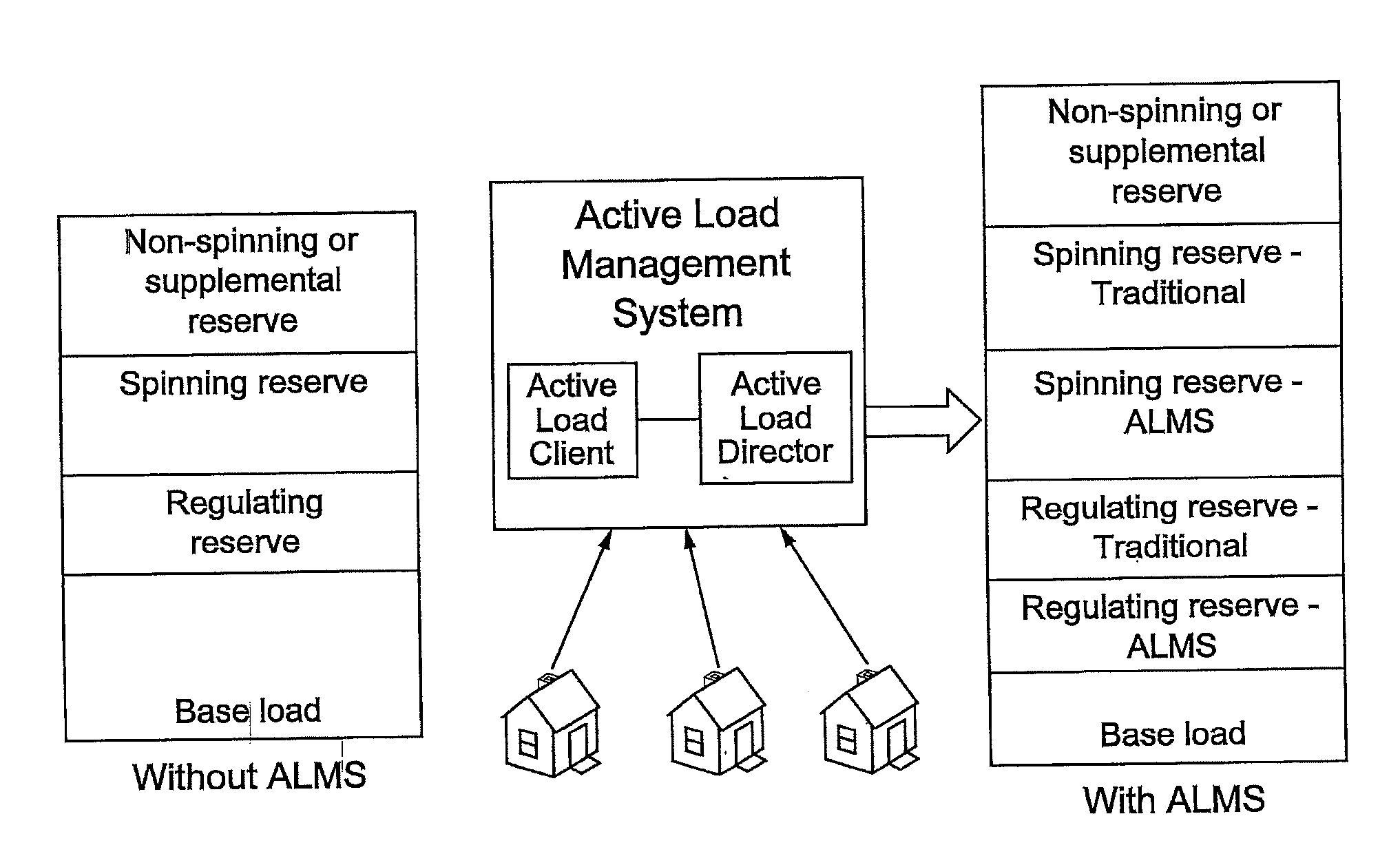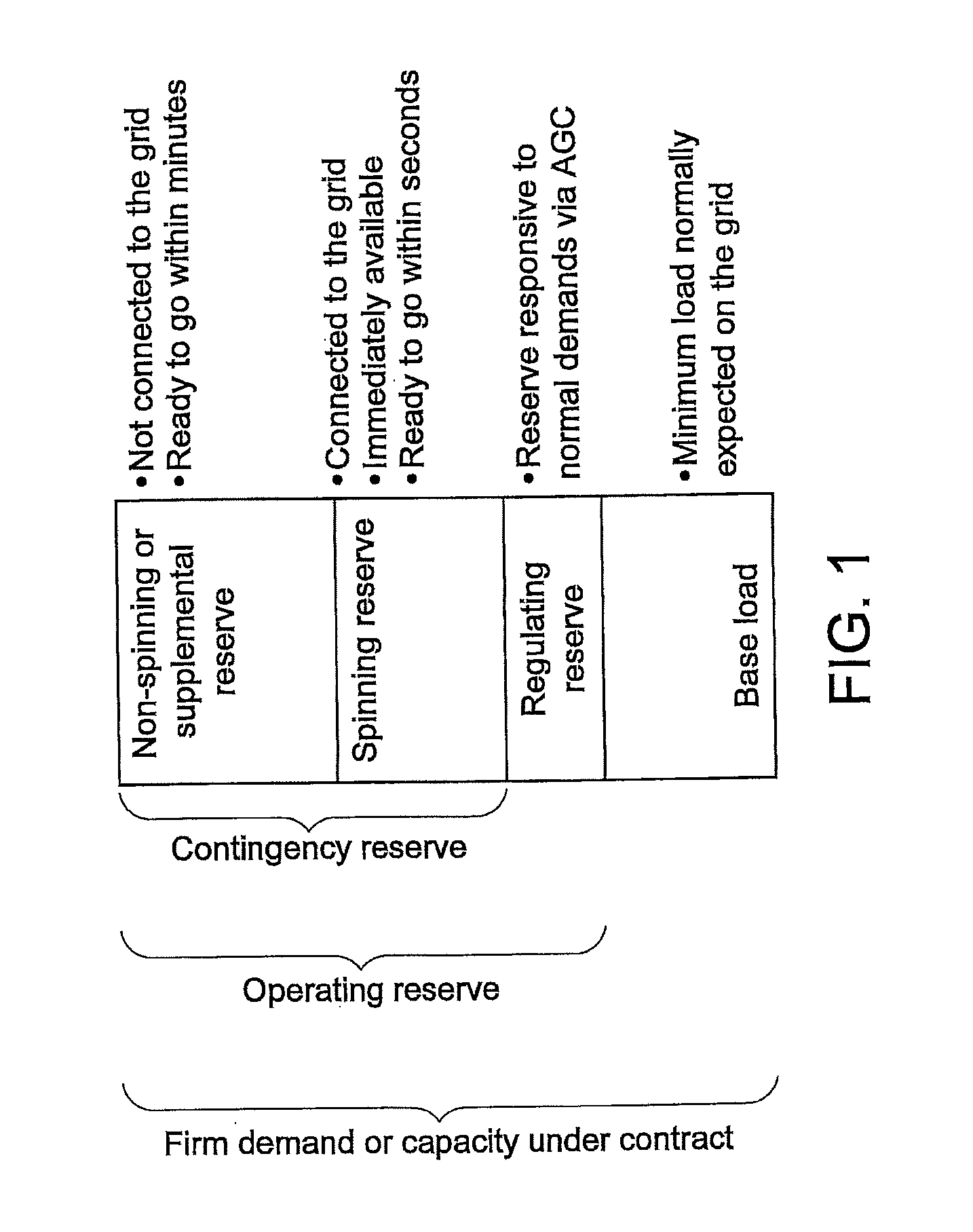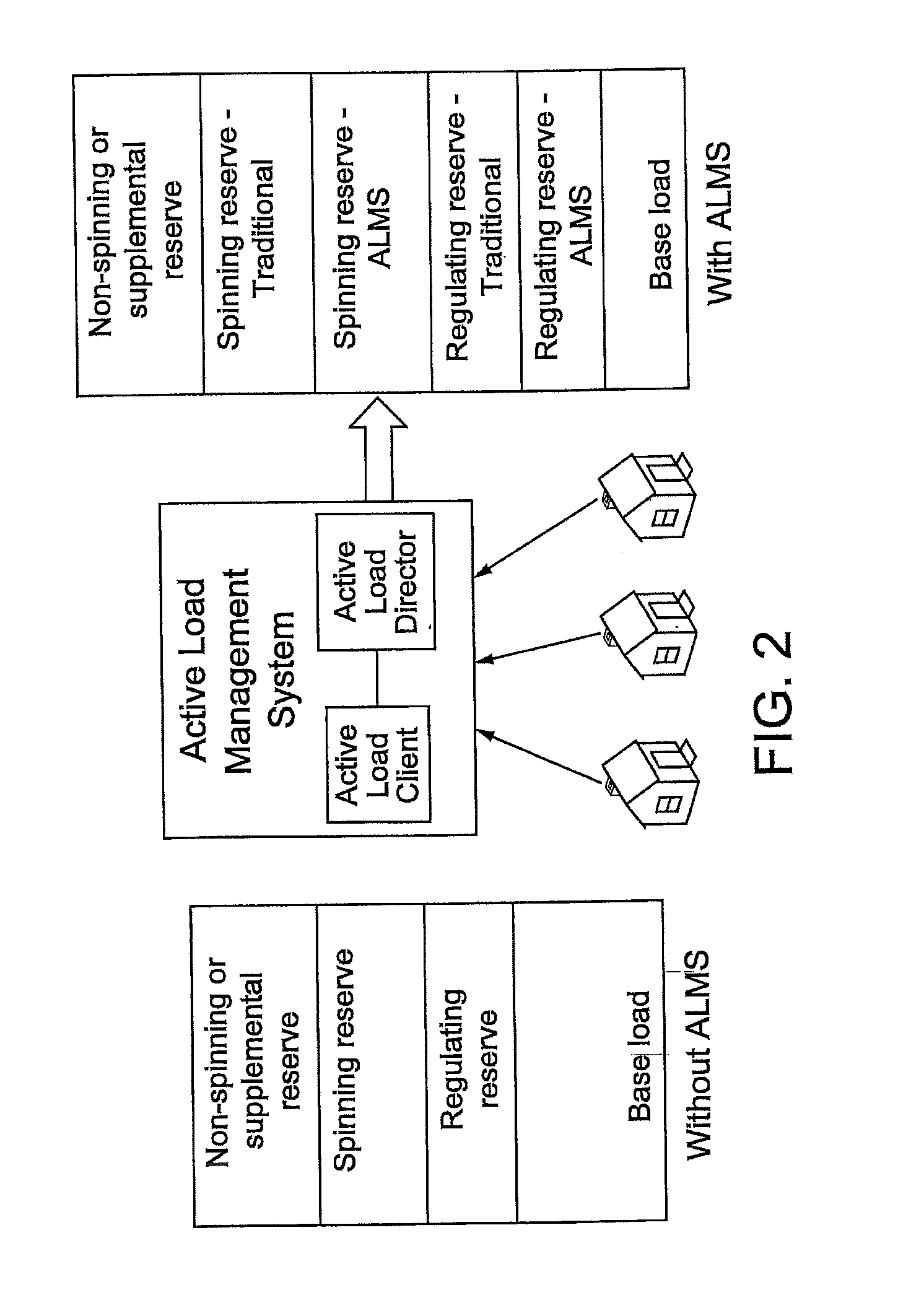System and method for estimating and providing dispatchable operating reserve energy capacity through use of active load management
a technology of active load management and operating reserve energy capacity, applied in the field of system and method for estimating and/or providing dispatchable operating reserve energy capacity for electric utilities, can solve the problems of uneconomical storage of power, unsatisfactory fluctuations in line frequency, and additional costs for the utility
- Summary
- Abstract
- Description
- Claims
- Application Information
AI Technical Summary
Benefits of technology
Problems solved by technology
Method used
Image
Examples
Embodiment Construction
[0042]Before describing in detail exemplary embodiments that are in accordance with the present invention, it should be observed that the embodiments reside primarily in combinations of apparatus components and processing steps related to actively monitoring and managing power loading at an individual service point (e.g., on an individual subscriber basis) and throughout a utility's service area, as well as determining available or dispatchable operating reserve power derived from projected power savings resulting from monitoring and management of power loading. Accordingly, the apparatus and method components have been represented where appropriate by conventional symbols in the drawings, showing only those specific details that are pertinent to understanding the embodiments of the present invention so as not to obscure the disclosure with details that will be readily apparent to those of ordinary skill in the art having the benefit of the description herein.
[0043]In this document,...
PUM
 Login to View More
Login to View More Abstract
Description
Claims
Application Information
 Login to View More
Login to View More - R&D
- Intellectual Property
- Life Sciences
- Materials
- Tech Scout
- Unparalleled Data Quality
- Higher Quality Content
- 60% Fewer Hallucinations
Browse by: Latest US Patents, China's latest patents, Technical Efficacy Thesaurus, Application Domain, Technology Topic, Popular Technical Reports.
© 2025 PatSnap. All rights reserved.Legal|Privacy policy|Modern Slavery Act Transparency Statement|Sitemap|About US| Contact US: help@patsnap.com



